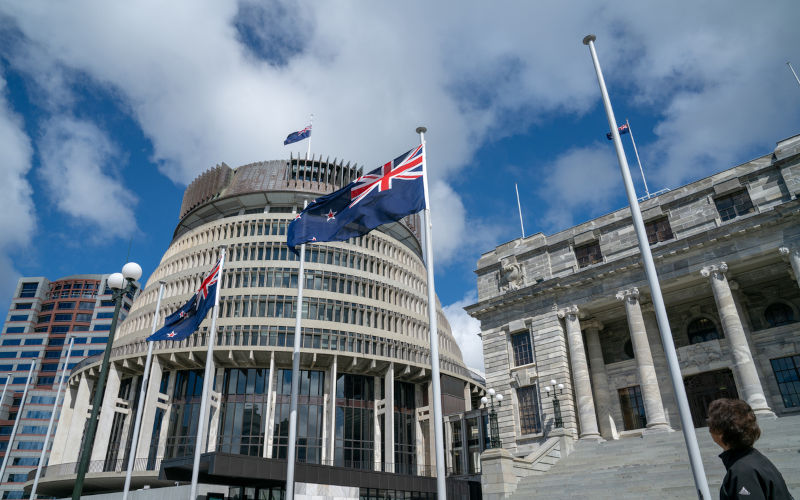New Zealand risks perilous pivot
August 21, 2023
Wellingtons shift in defence policy abandons long-held neutrality, follows US anti-China stance.
New Zealand has been increasingly bent on asserting a place in the United States-led ranks opposing China in the Asia-Pacific region, following in the footprints of Australia.
In recent decades, New Zealand has cultivated a sense of pride in its independent foreign policy. The genesis of this stance can be traced back to the 1980s, when the US, in response to New Zealands nuclear-free policy, suspended its obligations under the ANZUS Treaty.
Wellingtons decision charted a path distinct from US interests, fostering a sentiment of self-reliance and autonomy on the global stage.
The legacy of this continued to resonate up till now, shaping New Zealands approach, and it asserted its identity as a nation defining its own course. With the demise of the Cold War era, New Zealand embraced emerging opportunities, spanning from Beijing to Cape Town, for three fruitful decades.
However, the countrys pivot from neutrality against China has become apparent as it contemplates joining the AUKUS security alliance of Australia, the United Kingdom, and the US. As revealed by a torrent of strategic blueprints, the countrys defence policy is undergoing a perilous overhaul.
The catalyst for this stance lies in three strategy documents recently unveiled by Andrew Little, the minister of defence. These are New Zealands inaugural National Security Strategy, the military-focused Defence Policy and Strategy Statement, and the Future Force Design Principles.
Overall, these documents mark an unprecedented shake-up in New Zealands foreign and defence policies, for a risky metamorphosis spearheaded by a belligerent approach toward reevaluating the countrys military capabilities.
At the core of the new Defence Policy and Strategy Statement lies an intent to attain combat-capable status and extend its military engagements in the Pacific region. Additionally, acquiring advanced military hardware is another crucial aspect.
With Chinas name appearing over a dozen times, the blueprint identifies Beijing as the primary target of New Zealands strategic overhaul. This aggressive stance reflects New Zealands attempt to tackle the presumed challenges posed by Chinas growing presence in the Pacific region.
According to the National Security Strategy, Chinas rise is a major driver of geopolitical change. And the authors use a slogan of the US and Australia in accusing Beijing of economic coercion, totally disregarding US sanctions.
This Security Strategy theme marks a significant departure for Wellington. New Zealand has traditionally maintained amicable ties with Beijing amid the worsening relations between China and the US-led West. However, the language of the documents suggests a drastic shift in the countrys approach toward China.
However, signs now suggest that this prosperous era of geopolitical choreography is ending, prompting Wellington to shelve its independent foreign policy for the lure of US-led alliances. As a result, New Zealand has participated in NATO summits last year and this year.
While Wellington embarks on a confrontational and risky trajectory, the world is watching with intrigue to witness the ramifications of this generational shift in the countrys global outlook.
This shift toward a more assertive Western-styled foreign policy position is perilous, especially given Chinas status as New Zealands largest trading partner, accounting for over a quarter of its annual exports.
Another disturbing point of concern in the latest road map is the potential for New Zealand to enter Pillar Two of the AUKUS alliance. Notably, the Defence Policy and Strategy Statement cryptically hints at the chance for cooperation on emerging technologies with close security partners.
Until now, New Zealands hesitance toward AUKUS stemmed from its nuclear dimension conflicting with the countrys nuclear-free policy and its desire to maintain an independent foreign policy. The recent shift in defence policy has sparked a fierce tug-of-war within the Labour government.
Obviously, with Octobers parliamentary election, the final decision will fall to the next government.
New Zealand should consider an alternative course, aligning with its tradition of independent foreign policy. Embracing a role focusing on de-escalation, dialogue, and diplomacy could serve as a constructive approach, instead of fuelling geopolitical tensions in the Asia-Pacific by adopting an anti-China approach.
First published in the China Daily HK edition August 18, 2023
